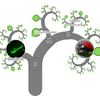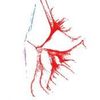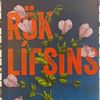16.10.2012 | 12:17
Barnalegir vķsindamenn...vķsindaleg börn
Nżlegar rannsóknir sżna aš smįbörn eru vķsindamenn. Ašferš vķsinda byggir į prófanlegum tilgįtum, t.d. žeirri hugmynd aš plöntur žurfi koltvķldi til aš lifa. Tilgįturnar eru prófašar, meš žvķ t.d. aš neita plöntum um koltvķldi, og nišurstöšurnar metnar. Sannarlega felur hin vķsindalega ašferš meira ķ sér, eins og einfaldleika, samanburš viš ašra žekkingu og kröfu um innra samręmi tilgįtunar.
Nżlegar rannsóknir hafa sżnt aš leikskólabörn hegša sér eins og vķsindamenn, til aš reyna aš skilja veröldina. Žau fį hugmyndir, prufa žęr og lęra af nišurstöšunum. Žegar börn komast yfir nżtt leikfang, žį prufa žau aš snerta žaš, hrista, hreyfa og toga, til aš lęra į eiginleika žess. meš oršum Alison Gopnik ķ Science.
For example, Cook et al. (33) performed a variant of the “blicket detector” experiments using “pop-beads,” small plastic beads that could be hooked together to make larger units. First, the experimenter put individual beads on the machine. One group of 4-year-olds saw that some of the beads made the machine go and some didn’t. A second group saw that all the beads made the machine go. Then, the experimenter simply gave the children the machine and two new beads that were hooked together and let them play.
The “some beads” condition sets up a causal problem for the children: Which beads make the machine go? To solve that problem, you need to test each bead by itself. The “all beads” condition does not; children can assume that both beads will make the machine go. Sure enough, children spontaneously pulled the beads apart and tested them separately in their play in the “some beads” condition but not in the otherwise identical “all beads” condition.
....These results indicate that when young children face a causal puzzle, they try to solve that puzzle in their spontaneous play. Children’s actions ensure that they receive causally relevant and informative evidence. Once that evidence is generated through play, children can use it to make the correct causal inferences.
Börn eru einnig nęm (viškvęm) fyrir kennslu, ef žau sjį fulloršinn hegša sér į įkvešinn hįtt meš tiltekinni lokanišurstöšu, žį eru žau lķkleg til aš endurtaka allt ferliš. Ef fulloršinn stendur į einum fęti, galar eins og hani og fęr sķšan kexköku, žį munu börnin reyna žaš sama. Slķk kennsla er nįttśrulega lykillinn aš žvķ aš mišla žekkingu milli kynslóša, en getur einnig leitt til trśarlegrar og atferlislegrar innrętingar (sbr. skipulögš trśarbrögš, fótboltadżrkun, strippbśllutķsku).
Tilraunir hafa einnig sżnt aš börn eru einnig viškvęm fyrir kennslu. Ef leišbeinandi, kennari, fóstra eša foreldri, sżnir žeim hvernig į aš gera hlutinn žį eru žau ólķklegri til aš gera eigin tilraunir.
Gopnik ręšir žetta einnig:
This work also should raise serious red flags about recent pressure, both from parents and policy-makers, to make preschools more structured and academic—more like schools. This research is new, so it’s not surprising that early childhood policy-makers still routinely hold an outdated view of development. ....
The new work, then, provides a scientific foundation for a long tradition of “inquiry-based” science education. But our new understanding of children’s intuitive science ought to help us go beyond just a general emphasis on active inquiry. Instead, it could lead us to much more specific and scientifically supported proposals for education. Science itself could help turn young children’s natural curiosity and brilliance into better science teaching and learning.
Leišrétting. Titillinn var įšur barnalegir vķsindamenn.
Alison Gopnik Scientific Thinking in Young Children: Theoretical Advances, Empirical Research, and Policy Implications Science 28 September 2012:Vol. 337 no. 6102 pp. 1623-1627 DOI: 10.1126/science.1223416
SINDYA N. BHANOO Scientific Inquiry Among the Preschool Set NY Times (October 1, 2012)
Flokkur: Vķsindi og fręši | Breytt 17.10.2012 kl. 11:15 | Facebook
Nżjustu fęrslur
- Eru virkilega til hęttuleg afbrigši veirunnar sem veldur COVI...
- Grunnrannsóknir eina ašferšin til aš skapa nżja žekkingu og e...
- Lķfvķsindasetur skorar į stjórnvöld aš efla hlut Rannsóknasjó...
- Eru bleikjuafbrigši ķ Žingvallavatni aš žróast ķ nżjar tegundir?
- Hröš žróun viš rętur himnarķkis
- Leyndardómur Raušahafsins
- Loftslagsbreytingar og leištogar: Feršasaga frį Sušurskautsla...
- Genatjįning ķ snemmžroskun og erfšabreytileiki bleikjuafbrig...
- Fjöldi og dreifing dķlaskarfa į Ķslandi
- Staša žekkingar į fiskeldi ķ sjó





Bęta viš athugasemd [Innskrįning]
Ekki er lengur hęgt aš skrifa athugasemdir viš fęrsluna, žar sem tķmamörk į athugasemdir eru lišin.